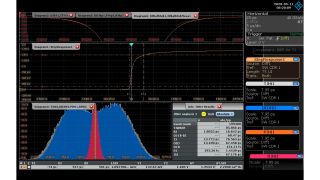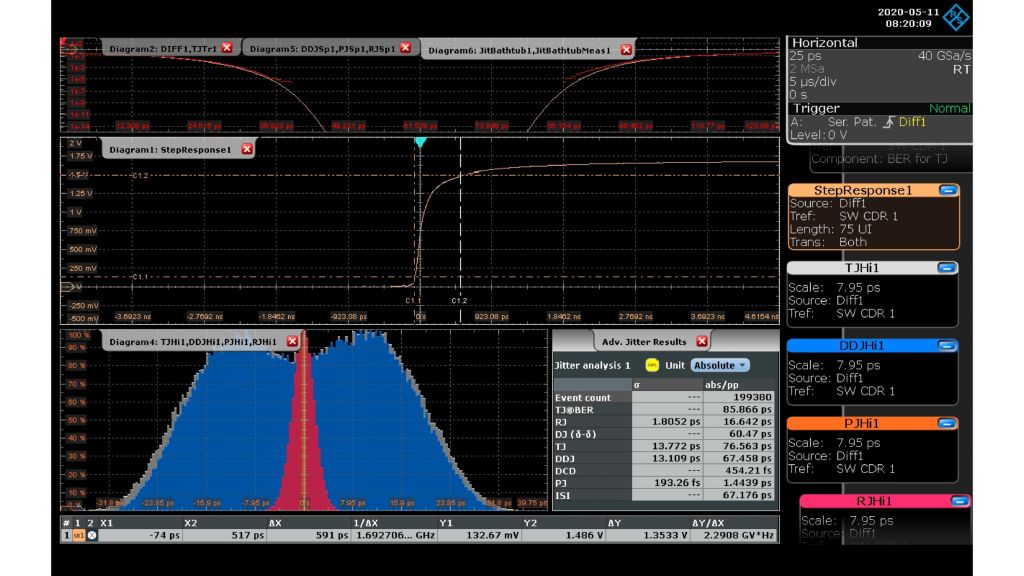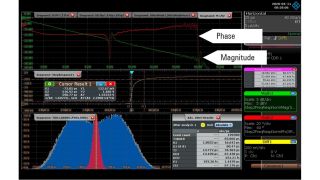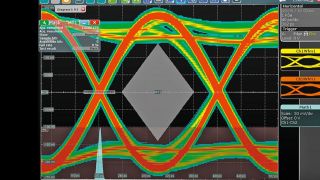The jitter decomposition in Fig. 2 shows results in a table and the statistical data as histograms (TJ, RJ, PJ, DDJ1)), which as expected is dominated by the DDJ. The bathtub curve of the BER illustrates a good accordance between the measured and the calculated BER. The novel part in this decomposition is the estimated step response shown in the middle of Fig. 2. The step response is the result of an ideal step applied to the transfer function of the channel. An uncalibrated test fixture would be inherently part of this estimation.
1
TJ: total jitter, RJ: random jitter, PJ: periodic jitter, DDJ: data dependent jitter.
The user has the option to configure the step response length in the estimation; in this case, it is set to 75 UI. Setting the step response length is governed by three principals:
- The longer the configured step response length, the longer the computation time.
- The step response length should be longer than the channel memory. A long step response is beneficial for detailed step response analysis.
- The run length of the pattern should be longer than the step response length.
The user can analyze the step response with familiar tools such as a cursor and automated measurements. In the example, the rise time is measured via a cursor. The measurement of the rise time tr lets the user estimate the bandwidth fB of the channel, using the approximation fB = 0.35 ⁄ tr , which is valid for a single-pole lowpass filter.
More detailed analysis in the frequency domain is therefore of interest. Topics such as overshoot, droop and ringing of the transfer function are also visible in the frequency domain.














